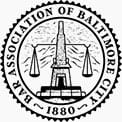Maryland’s OSHA calls attention to the dangers of tree trimming
Workplace injuries for those who trim or remove trees are serious. The Maryland Occupational Safety and Health agency has issued a bulletin to call attention to these injuries.
Maryland Occupational Safety and Health (MOSH) is attempting to reduce the risk of injuries and fatalities resulting from tree trimming and removal work. Maryland takes these types of jobs seriously and has various regulations in place to help better ensure the safety of the workers in this line of work.
What types of rules and regulations are present?
The state requires that workers receive training at no cost prior to beginning this type of work. Additional training should be provided when new work tasks are given or new equipment is in use. Employers are also expected to monitor the work sites and provide additional training to any employee that is found to complete their work in an unsafe manner.
These rules also include how to store handsaws, folding saws and other tools and how to safely drop limbs to the ground. The Department of Labor, Licensing, and Regulation’s Division of Labor and Industry also notes that tree care and removal work should be consistent with the requirements outlined by the Maryland Department of Natural Resources.
What steps are taken to reduce the risk of tree care related work injuries?
In addition to the rules and regulations that are already in place, MOSH posted a bulletin that is designed to serve as a reminder of these expectations. The bulletin provides safety information to workers in this area of employment.
Some tips from the publication include:
- Assess the environment. Before beginning the trimming, pruning or tree removal job, look over the site for any potential hazards. Check for any electrical wires and other potential hazards. Also, check the local weather. Do not attempt to complete the job in dangerous weather conditions.
- Know the tools. It is not uncommon for these jobs to require the use of dangerous tools, such as a chain saw. Do not use this equipment unless properly trained. Use protective gear like safety glasses, gloves and hard hats as well.
- Climb wisely. If planning to climb the tree to complete the job, make sure the tree is not rotten. Also, do not climb with tools in hand.
Unfortunately, accidents in this line of work are not uncommon. The United States Centers for Disease Control and Prevention (CDC) conducted a study on work-related fatalities to gather more data about the problem. The study reviewed fatalities spanning a 15 year period, and found that of the 1,285 fatalities that were reported to the Census of Fatal Occupational Injuries, 44 percent of these deaths were the result of accidents when completing trimming or pruning tasks. 57 percent of the workers that were fatally injured worked with a small business, reporting 10 or fewer employees.
What remedies are available for those who are injured while working in the tree removal field?
Workers who are injured on-the-job generally qualify for benefits through the workers’ compensation system. This is true both for those injured and for family members who have a loved one that suffered fatal injuries while working. Anyone in this situation is wise to contact an experienced workers’ compensation lawyer to discuss their options and better ensure they receive the benefits they are entitled.









